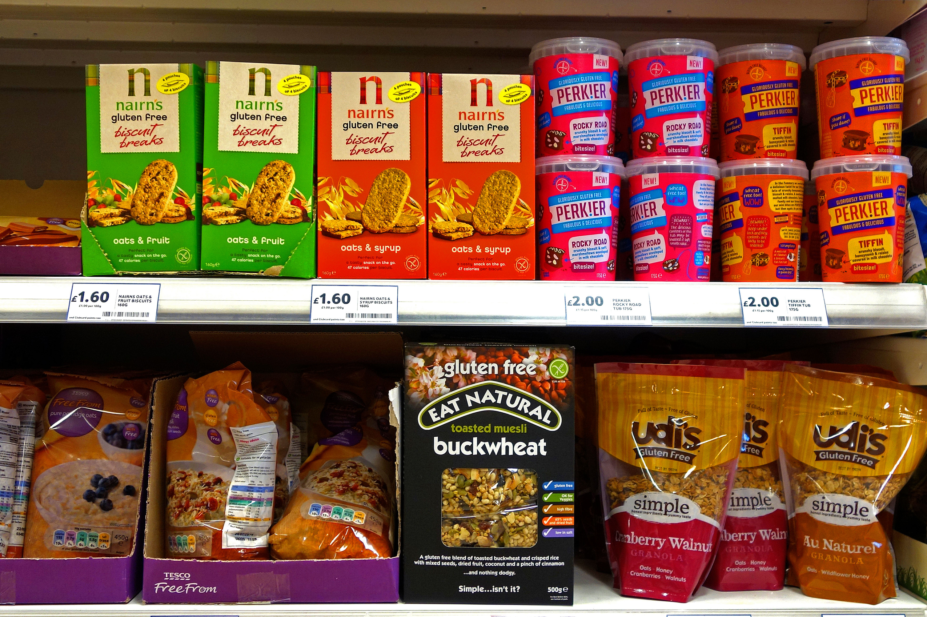
Kevin Britland / Alamy Stock Photo
Prescribing of gluten-free products varies substantially across primary care in England, according to a new study published in BMJ Open (16 April 2018)[1]
.
Researchers carried out a retrospective cohort study incorporating all ‘typical’ English GP practices, and excluding prescribing in non-standard settings, such as prisons.
They used real prescribing and spending data sourced directly from pharmacy claims in order to measure variation in prescribing of gluten-free foods, both geographically and over time, and determine the factors associated with volumes of gluten-free prescribing.
It was revealed that in the year from July 2016 to June 2017, there were 1.3 million gluten-free prescriptions, resulting in a total expenditure of £18.7m (£14.41 per item), compared with 1.8 million prescriptions and £25.4m expenditure between July 2012 and June 2013.
Monthly prescriptions from GP practices remained steady at around 2 per 1000 patients per month between July 2012 and mid-2015, then declined to 1.04 per 1000 patients in June 2017.
Some GP practices prescribed no gluten-free products, while the maximum rate of prescribing for any GP practice was 148.1 per 1000 patients per year.
And among clinical commissioning groups (CCGs), variation in gluten-free prescribing rates varied from 0.1 to 55.5 per 1000 patients over the last year.
The researchers concluded that prescribing in different areas of the country seemed to be determined “largely without good reason” and to a large extent by the decisions and preferences of clinicians and local health services, such as CCGs.
They found that the most deprived quintile of practices prescribed at an 11% lower rate than those in the least deprived areas. Also, the practices with the greatest proportion of patients over 65 years of age prescribed at a 46% higher rate than those with the lowest proportion, which the authors said was unsurprising because coeliac disease prevalence increases with age.
“Gluten-free prescribing is clearly in a state of flux at the moment, with an apparent rapid reduction in prescribing nationally,” the researchers said.
“Although gluten-free foods are perceived to be becoming cheaper and more widely available, they remain more expensive than budget wheat-containing options (on average five times greater), and it is argued that vulnerable populations may struggle to source appropriate foods for their condition without prescriptions.”
In March 2017, the Department of Health and Social Care (DHSC) consulted on the availability of gluten-free foods on prescription in primary care, which ran alongside a wider consultation on limiting routine prescribing of a range of products in primary care.
Pharmacy bodies advised the DHSC against implementing a ‘blanket ban’ on the prescribing of gluten-free foods as it could impact negatively on groups on low or fixed incomes. The DHSC announced in February 2018 that it was limiting the products that would be available on NHS prescription to gluten-free bread and flour mixes.
References
[1] Walker A, Curtis H, Bacon S et al. Trends, geographical variation and factors associated with prescribing of gluten-free foods in English primary care: a cross-sectional study. BMJ Open 2018;8:e021312. doi:10.1136/bmjopen-2017-021312


